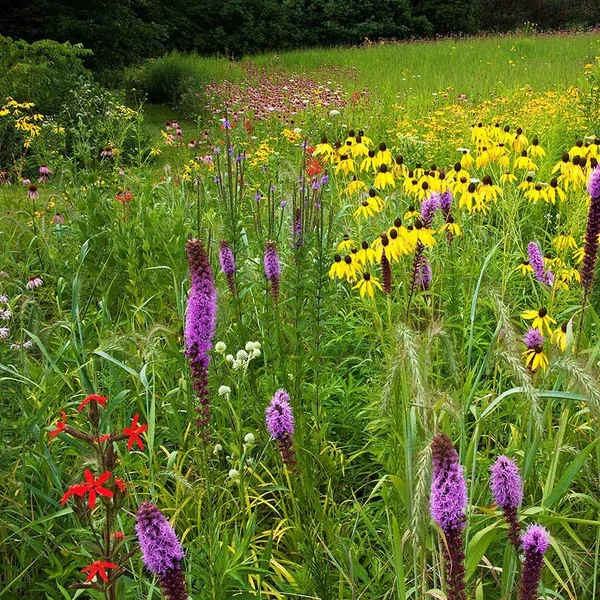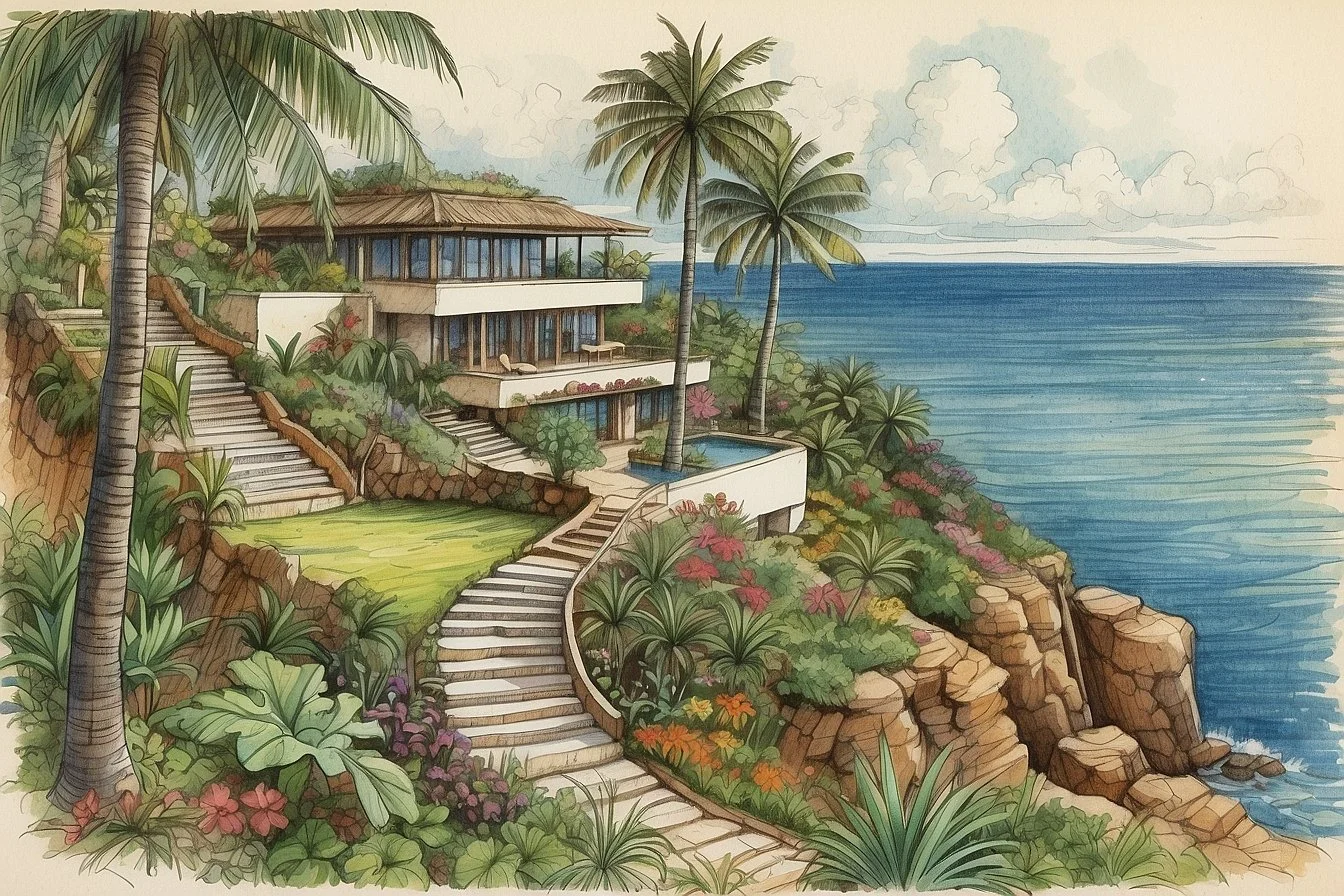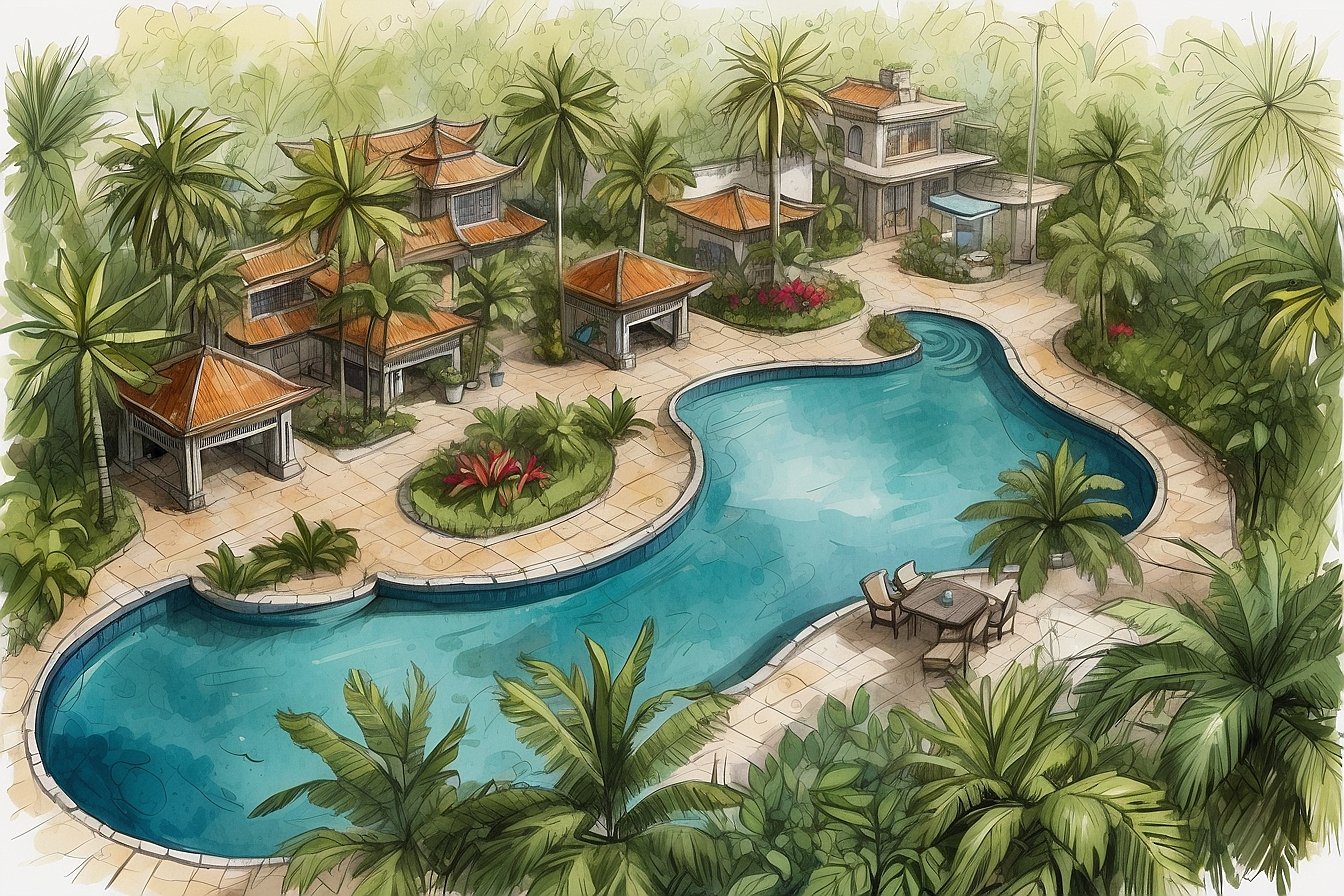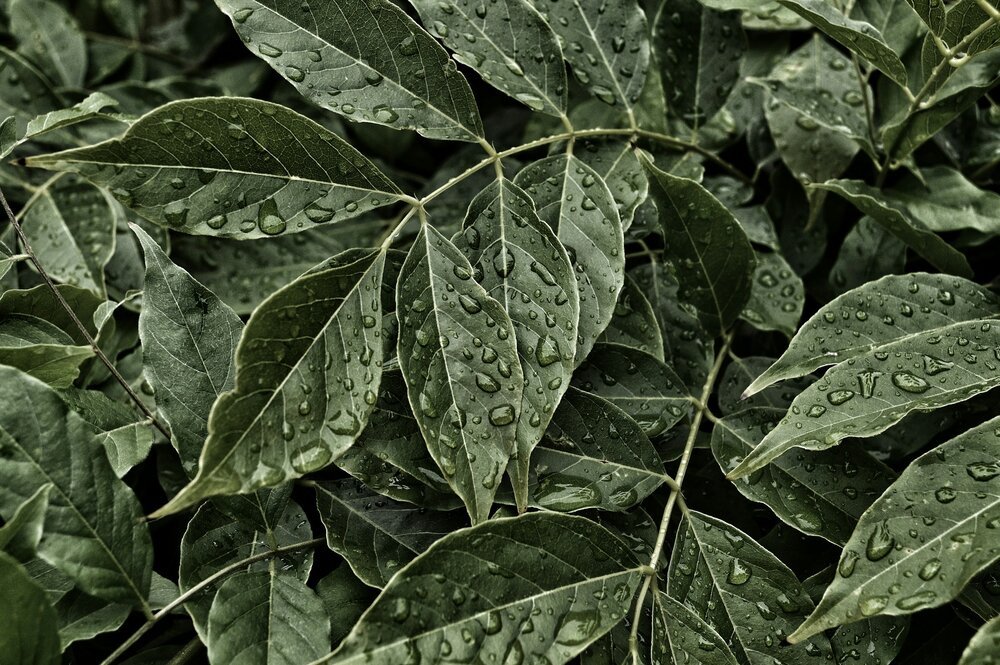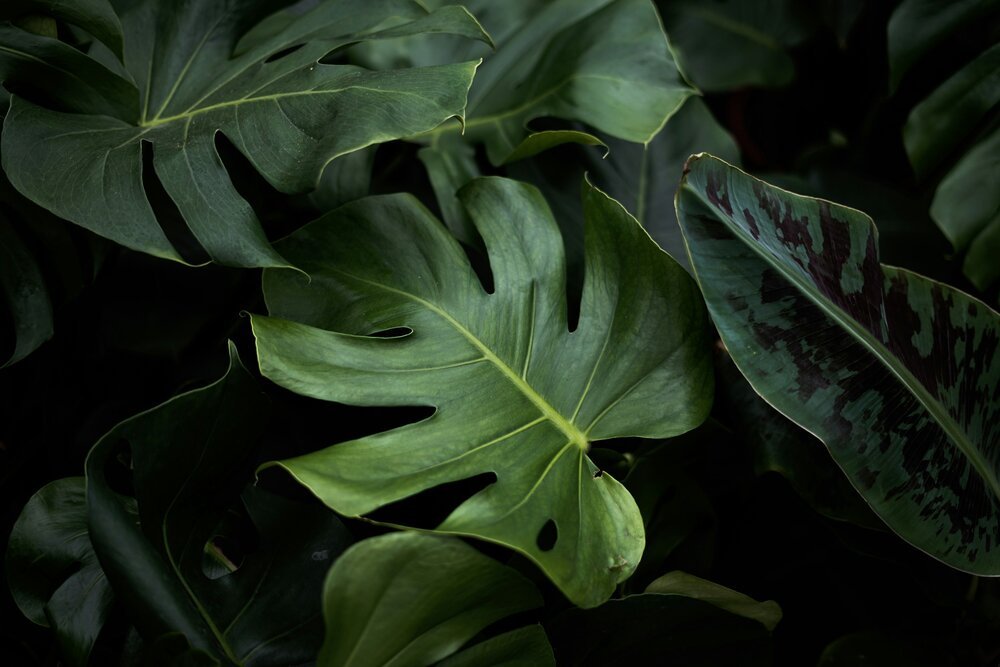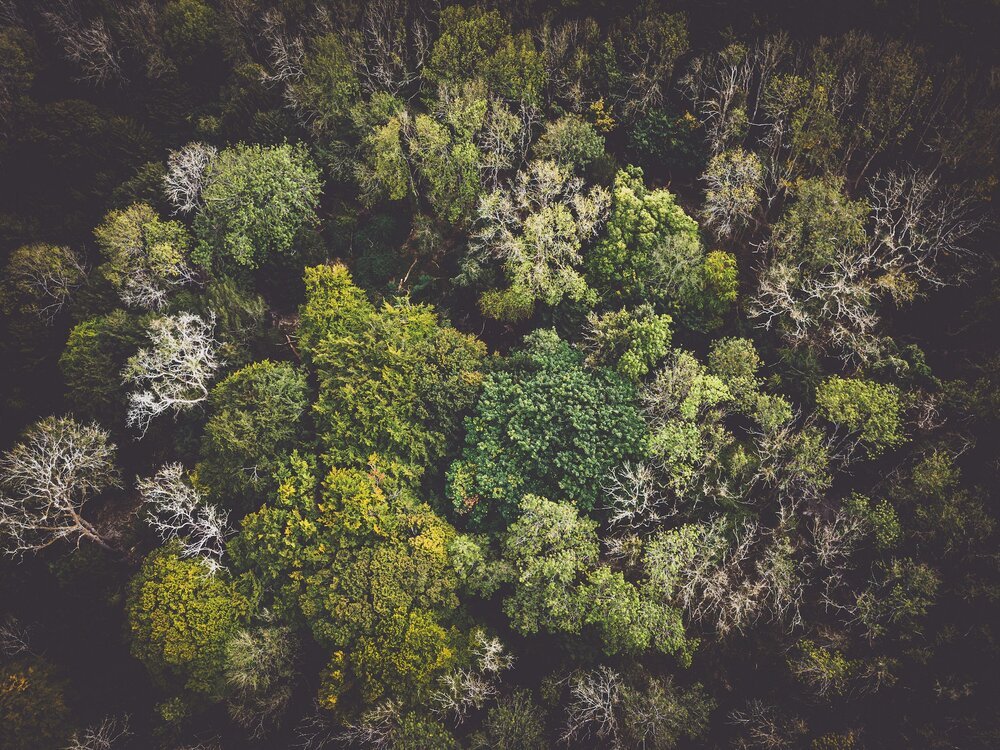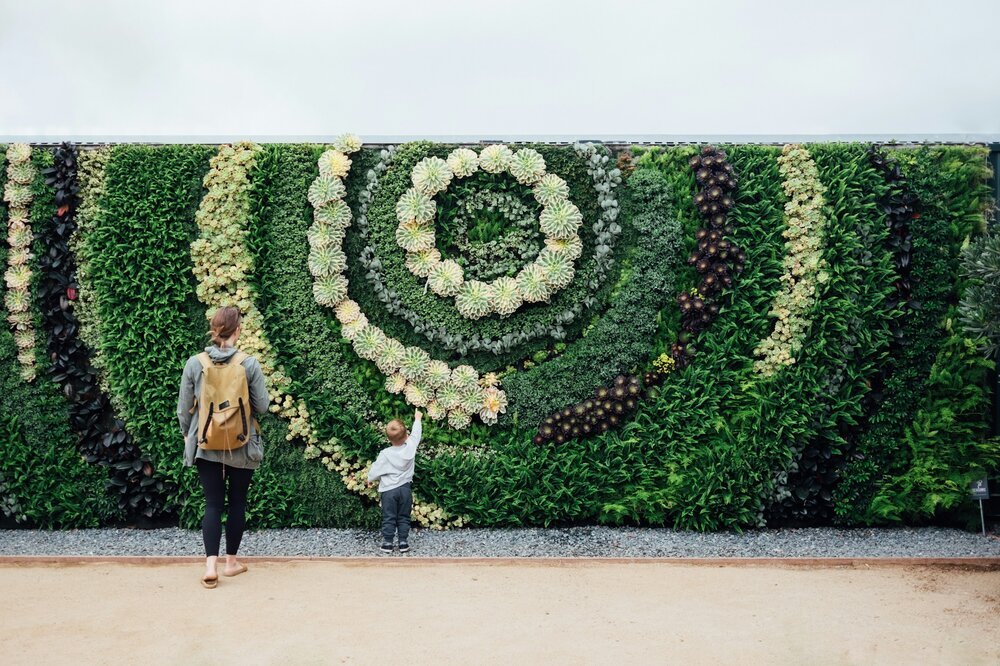Our Collection of Articles
Explore our collection of articles on landscape architecture, horticulture, gardening, and ecology. From fresh design ideas to sustainable planting practices, you’ll find insights that connect the beauty of outdoor spaces with the importance of caring for the environment.
See our full archive here.
Designing landscapes with native plants in Northeast Florida isn’t just a trend—it’s a smart, sustainable choice that benefits homeowners, wildlife, and the environment. From the coastal dunes of Amelia Island to the shady woodlands of Clay County, native species are uniquely adapted to the region’s sandy soils, humid climate, and periodic droughts.
Designing a luxury residential garden involves a blend of aesthetics, functionality, and attention to detail. Here are twenty must-know design tips to help you create a luxurious and inviting garden space.
Embarking on a landscape renovation project is an exciting endeavor, offering the opportunity to transform outdoor spaces into beautiful, functional and sustainable environments. Whether you're revamping a residential backyard or redesigning the grounds of a commercial property, careful planning is essential to ensure success.
High-end tropical resort gardens evoke a sense of luxury, tranquility, and sophistication. These spaces are meticulously designed to blend natural beauty with opulent elements, creating an oasis of relaxation and indulgence for guests. In this guide, we'll explore some of the most captivating luxurious design styles found in high-end tropical resort gardens, offering inspiration for creating your own paradise retreat.
Creating a visually appealing and functional residential landscape requires thoughtful planning and careful execution. Unfortunately, many homeowners make common mistakes that can impact the aesthetics, functionality, and longevity of their outdoor spaces. In this article, we'll explore some of these common pitfalls and provide insights on how to avoid them.
In the realm of landscape architecture, the ability to convey a vision is as crucial as the design itself. Traditional drawings and blueprints, while essential, may fall short in fully capturing the immersive and captivating experience of a planned landscape. Enter 3D modeling, a technological marvel that has revolutionized the way landscape architects communicate their ideas and, in turn, significantly enhances the process of selling landscape architecture projects.
Designing a tropical resort entails more than just creating a beautiful space; it's about crafting an immersive experience that harmonizes with the environment. To achieve this, landscape architects must consider five key features during site planning. In this article, we delve into these elements to provide a comprehensive guide for creating luxurious tropical havens.
In the vibrant tapestry of Caribbean landscapes, creating a garden that flourishes in the shade requires careful selection of plants suited to the region's tropical climate. Whether nestled beneath towering palms or sheltered by lush foliage, a shade garden can be just as captivating as its sun-drenched counterparts. Here, we explore some of the best shade plants for Caribbean gardens, curated to thrive in the region's unique conditions.
Tropical landscapes, with their lush foliage, vibrant colors, and diverse ecosystems, present a rich tapestry of design possibilities. However, the complexities of crafting a harmonious tropical landscape are not to be underestimated. In this article, we will explore the intricacies of tropical landscape design, delving into the challenges and opportunities that arise when cultivating a diverse array of plant groups that thrive together in the unique conditions of the tropics.
Renovating a resort landscape is a meticulous and rewarding process that requires careful planning, attention to detail and creativity. From completing an audit and inventory of existing conditions to implementing a design that enhances guest experience, every step is crucial in transforming the outdoor environment into an oasis of luxury and tranquility. In this guide, we'll explore the step-by-step process of renovating a resort landscape, from initial assessment to construction administration.
Palm trees, with their graceful fronds and iconic silhouettes, are synonymous with tropical landscapes. However, these beloved botanical wonders are not immune to the perils of diseases and pests. Understanding the common threats to palm trees is crucial for arborists, landscapers, and enthusiasts alike. This article delves into the prevalent issues faced by palm trees and provides insights into preventive measures and treatments.
In the bustling concrete jungles of modern urban living, a movement has emerged—one that seeks to reconnect us with the innate human affinity for nature. This movement is encapsulated in the concept of Biophilic Design, a transformative approach that integrates natural elements into our built environments. In this exploration, we unravel the essence of Biophilic Design, understanding its principles, benefits, and the profound impact it has on our well-being.
A luxury Caribbean garden, with its vibrant colors, lush foliage, and tropical allure, is a testament to nature's splendor. Maintaining such an idyllic oasis requires a delicate balance of care and expertise. This article explores essential tips for preserving the beauty and elegance of your upscale Caribbean garden, ensuring it remains a haven of tranquility and opulence.
In the ever-evolving world of hospitality, the aesthetic appeal and functionality of a resort landscape play a crucial role in attracting guests and ensuring a memorable experience. Renovating a resort landscape isn't merely about giving it a fresh look; it's a strategic investment that can significantly enhance guest satisfaction, environmental sustainability, and the overall success of the resort. In this article, we explore the enchanting benefits of breathing new life into a resort's outdoor spaces.
In the vibrant world of horticulture, where plants flourish and ecosystems thrive, the role of chemistry is fundamental. From the composition of soil to the synthesis of essential nutrients, chemistry forms the backbone of horticultural practices. This article explores the intricate relationship between chemistry and horticulture, shedding light on how the principles of chemistry contribute to the cultivation and sustenance of lush green landscapes and bountiful harvests.
In the realm of landscaping, the choice of plant species holds profound implications for both the environment and human well-being. Increasingly, landscape designers and homeowners are turning to native plants as champions of sustainability, biodiversity, and ecological resilience. In this exploration, we delve into the myriad benefits of using native plants in landscaping and how they serve as pillars of support for biodiversity, nurturing vibrant ecosystems and enriching our natural heritage.
In the serene realm of nature, a silent symphony is taking place beneath our feet and above our heads – the intricate dance of communication among plants. While devoid of vocal cords or intricate language systems, plants have developed remarkable ways to exchange information and respond to their environment. This phenomenon challenges traditional notions of communication and highlights the interconnectedness of the natural world.
A well-designed landscape is a living canvas that evolves and transforms with each passing season. The challenge lies in ensuring that this outdoor masterpiece remains visually appealing throughout the year. By implementing thoughtful strategies and embracing the dynamic beauty of nature, landscape designers can create spaces that captivate the senses in every season. In this article, we explore key strategies for crafting landscapes that offer year-round visual delight.
Designing landscapes in coastal areas presents a captivating canvas of challenges and opportunities, where the dynamic interplay between land and sea demands a nuanced approach. From salt-laden air to shifting sands, coastal environments require thoughtful consideration to create resilient, aesthetically pleasing, and environmentally sustainable outdoor spaces. In this exploration, we delve into the unique challenges and exciting opportunities that define the art and science of coastal landscape design.
Landscaping in water-scarce regions poses unique challenges, but with thoughtful planning and creative design, it's possible to create stunning and sustainable outdoor spaces that thrive in arid conditions. This guide offers tips and ideas for crafting aesthetically pleasing landscapes that embrace the beauty of water-wise gardening in regions where water conservation is crucial.
Embarking on a landscape installation project is an exciting endeavor, but it can also be a complex process that demands careful planning and execution. Streamlining this process is not only essential for meeting deadlines but also for delivering outstanding results. In this guide, we'll explore strategies to streamline landscape installations, ensuring efficiency without compromising quality.
In the face of urbanization and climate change, the conventional approach to managing stormwater is evolving. Landscape architects are pioneering innovative solutions that blend functionality with aesthetics, addressing the dual challenge of stormwater runoff and environmental conservation. This exploration delves into creative and sustainable approaches to managing stormwater through landscape design, showcasing the transformative potential of these initiatives.
As the sun dips below the horizon, a well-designed landscape lighting system has the power to transform outdoor spaces into enchanting realms. Thoughtful illumination not only enhances the visual appeal of gardens and architectural features but also extends the usability of outdoor areas after dark. In this guide, we explore the best practices for designing an exceptional landscape lighting system, ensuring that your outdoor spaces shine in both beauty and functionality.
In the ever-evolving tapestry of urban design, the concept of creating green spaces that serve multiple purposes has gained prominence. Beyond mere aesthetics, these versatile landscapes weave together functionality, sustainability, and community well-being. From promoting environmental resilience to fostering social interaction, multi-purpose green spaces stand as dynamic hubs that enhance the urban experience. In this exploration, we delve into the concept of designing green spaces that serve multiple purposes, examining the diverse roles they play in creating vibrant and harmonious urban environments.
As urban and suburban landscapes continue to expand, the fragmentation of natural habitats poses a significant challenge to wildlife populations. In the midst of concrete jungles, the concept of wildlife corridors emerges as a beacon of hope for the preservation of biodiversity. These interconnected pathways allow wildlife to traverse urban and suburban areas, promoting genetic diversity, ecological balance, and the overall health of ecosystems. In this exploration, we delve into the importance of creating wildlife corridors in urban and suburban landscapes and the profound impact they have on both the animal kingdom and human communities.
In a world grappling with water scarcity, landscape design emerges as a crucial arena for implementing sustainable practices. By embracing water conservation strategies, landscape architects can not only create visually stunning environments but also contribute to the responsible use of this precious resource. In this comprehensive guide, we explore innovative and practical approaches to conserve water in landscape design projects, ensuring a harmonious balance between creativity and environmental stewardship.
In the intricate dance between nature and human development, Landscape Ecology emerges as a guiding philosophy that seeks to understand the interconnectedness of ecosystems, providing a blueprint for sustainable and harmonious landscape design. This interdisciplinary field marries ecological principles with the artistry of design, fostering environments that not only serve human needs but also respect and enhance the natural world. In this exploration, we delve into the principles of Landscape Ecology and their transformative application in shaping the landscapes we inhabit.
In the quest for sustainable and resilient urban landscapes, the concept of rain gardens has emerged as a powerful and environmentally conscious solution. These verdant havens not only contribute to the aesthetic appeal of public spaces but also play a crucial role in managing stormwater runoff and fostering ecological balance. In this exploration, we uncover the manifold benefits of rain gardens in public landscapes, showcasing how these natural features harmonize with the environment, enhance community well-being, and pave the way for a more sustainable future.
In the evolving landscape of contemporary design, a striking and sustainable trend has taken root—the living wall. Often referred to as green walls or vertical gardens, these living artworks transform dull vertical spaces into thriving ecosystems of beauty and functionality. In this exploration, we delve into the enchanting realm of living walls, uncovering their origins, benefits, and the transformative impact they bring to both indoor and outdoor environments.
In the realm of landscape architecture, retaining walls serve as both functional and aesthetic elements, transforming slopes and uneven terrain into stunning, terraced masterpieces. Beyond providing structural support, retaining walls contribute to the overall design and usability of outdoor spaces. In this comprehensive guide, we explore the key considerations and design principles that empower homeowners and landscape architects to craft retaining walls that not only endure the test of time but also enhance the beauty of the surrounding environment.

